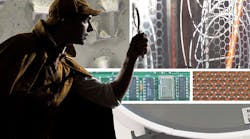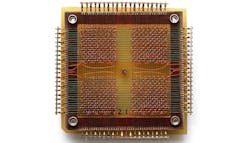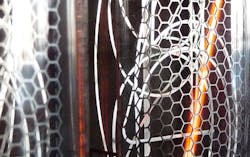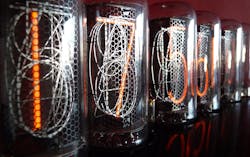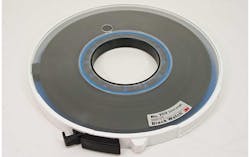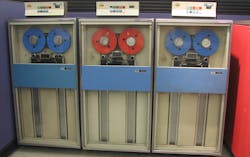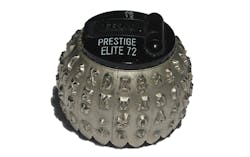Can you guess what devices are in the images below? The images come in pairs. The first will be a close up. Try to guess what you are looking at before scrolling down to the next one, which will show a zoomed-out version.
What is this storage device? (hint: storage)
Answer: Magnetic core memory
Magnetic core memory was the main memory for mainframes and many minicomputers. Tiny iron cores were held in a wire mesh that was used for sensing. They carried electrical current to read and write a bit that was stored in a single core. The terms “core memory” and “core dump” came about because of this type of memory.
What is this display device? (hint: it’s a tube)
Answer: Nixie tubes
These specialized vacuum tubes could display numbers and letters.
Could this be more storage? (hint: think about feeding an IBM 729)
Answer: 9-track magnetic tape
Magnetic tape was the main mass-storage technology for archiving massive amounts of data. It was preceded by 7-track tape and morphed into all sorts of other tape technologies that are still in use today.
You need one of these for one of those! (hint: more storage)
Answer: Bank of IBM 360 tape drives
Those 9-track tapes need these tape drives so that the system can read and write them. A pair of vertical vacuum columns pulls down the tape to allow for smooth movement across the magnetic read/write heads.
We move onto output. (hint: this is how you change fonts)
Answer: IBM Selectric ball
The IBM Selectric was a typewriter that used one of these balls to select the font that would be printed. Printing can be done, but switching between fonts requires replacement of the ball. A latch flips up and the ball pops off.
What board form factor is this? (hint: Intel, IEEE 796)
Answer: Multibus form factor
Intel developed the Multibus board form factor that turned into the IEEE 796 standard. It was followed up by the Multibus II. These days, board form factors of this type include VME, VPX, CompactPCI, etc.
